What to Wear on Mount Kilimanjaro: A Comprehensive Guide to Dressing for Success

Embarking on the epic journey from the equatorial base to the frosty summit of Mount Kilimanjaro is a formidable adventure that demands meticulous preparation, especially in the realm of clothing. The trek encompasses a spectrum of climates, from scorching heat to freezing cold, necessitating a strategic approach to dressing. In this comprehensive guide, we’ll delve into the intricacies of layering and selecting the right gear to ensure comfort, warmth, and success throughout your Kilimanjaro expedition.
Click here to get a downloadable PDF of our Clothing and Gear Packing Checklist!
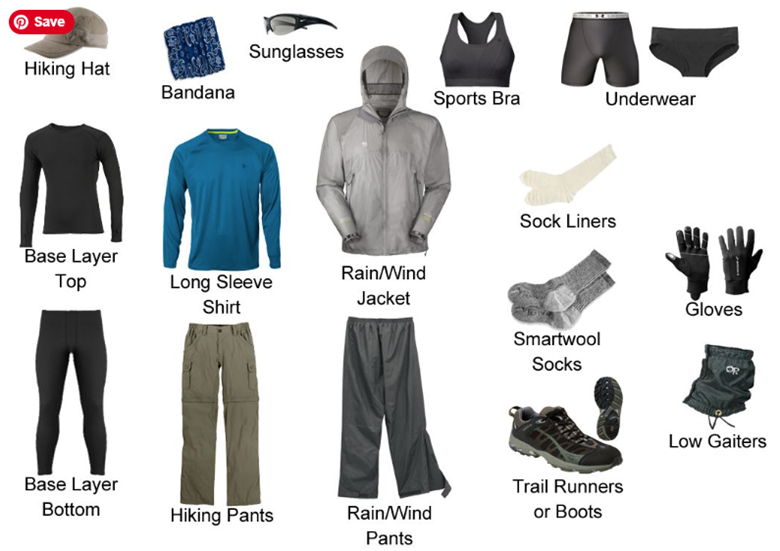
Introduction
Mount Kilimanjaro stands as Africa’s tallest peak, beckoning adventurers to conquer its formidable heights and breathtaking vistas. However, scaling this iconic summit requires more than just physical prowess—it demands careful consideration of clothing choices to navigate the diverse weather conditions encountered along the way. From the equatorial foothills to the icy summit, each step brings new challenges and opportunities for exploration. Let’s explore how to dress effectively for the journey ahead.
Understanding Kilimanjaro’s Climate
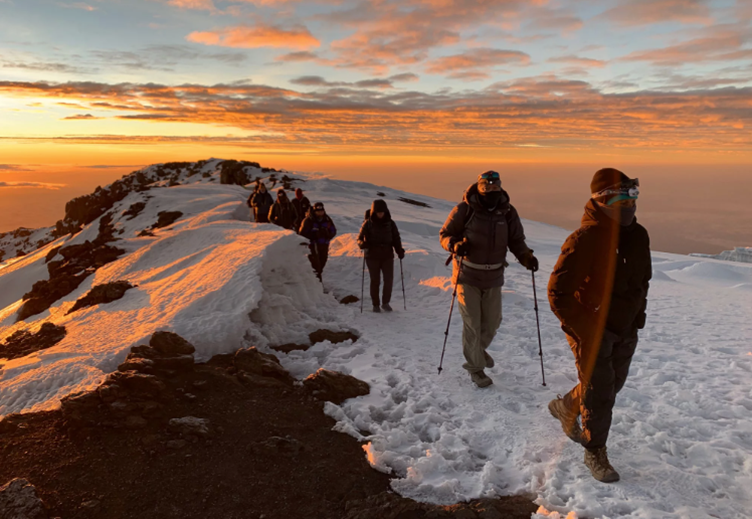
The trek from Kilimanjaro’s base to its peak traverses a range of climates akin to journeying from the equator to Antarctica. Temperatures can fluctuate dramatically, ranging from over 100 degrees Fahrenheit to well below freezing. Additionally, factors such as altitude, wind, and precipitation add complexity to the weather patterns encountered on the mountain. Understanding these nuances is essential for selecting appropriate clothing and gear to stay comfortable and safe throughout the expedition.
Layering System
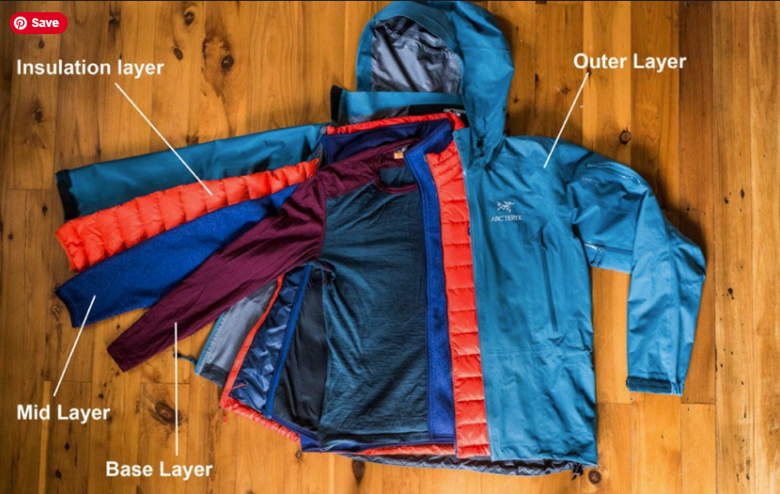
At the heart of dressing for climbing Kilimanjaro is the layering system—a strategic approach to wearing multiple layers of clothing to adapt to changing conditions while maintaining optimal body temperature. Layering offers versatility, thermal efficiency, and space-saving benefits, making it the preferred method for dressing on the mountain. By utilizing a combination of base, mid, and outer layers, climbers can adjust their clothing to suit the environment, activity level, and personal comfort preferences.
Base Layer
The base layer serves as the foundation of the layering system, providing moisture-wicking properties to keep the skin dry and moderately insulated. Lightweight base layers made from materials like silk, wool, or synthetic blends are ideal for their ability to regulate temperature and manage sweat. Merino wool is especially warm and wicking. Avoiding cotton is crucial, as it retains moisture and increases heat loss when wet. Instead, opt for technical fabrics designed for outdoor activities to ensure comfort and performance.
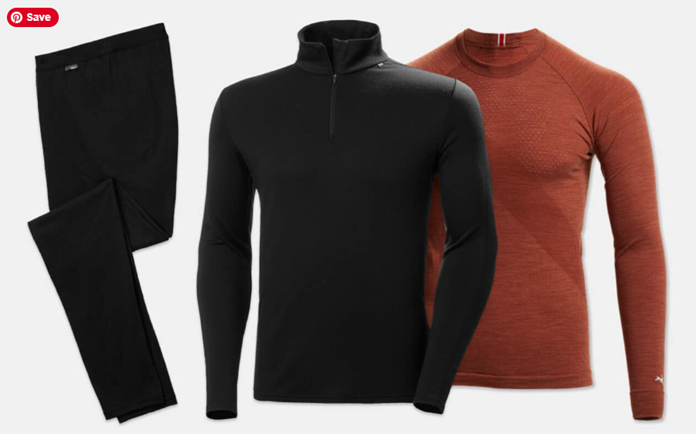
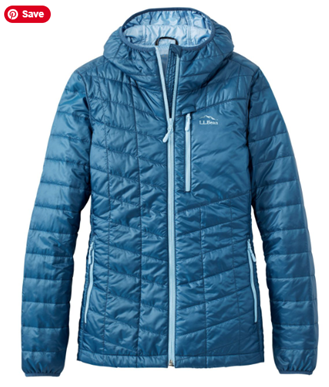
Mid Layer
Mid-layers focus on insulation to provide warmth in cooler temperatures. Materials like fleece, down, and synthetic fabrics trap air pockets between layers, creating a barrier against the elements. Fleece offers lightweight warmth and quick-drying properties, while down provides unmatched insulation in extreme conditions. Synthetic insulations, such as PrimaLoft, offer a more affordable alternative to down while retaining warmth when wet, but are not as warm as down. Selecting the appropriate mid-layers based on weather forecasts and personal preferences is key to staying warm and comfortable on the mountain.
Outer Layer
The outer layer acts as a protective shell against wind, rain, and snow. A waterproof and windproof hard shell with breathable properties is essential for keeping dry and comfortable in inclement weather. Rain jackets and pants constructed with multiple layers offer superior waterproof protection, with options ranging from 2 to 3-layer garments depending on durability and performance requirements. Choosing the right outer layer ensures reliable protection against the elements while allowing moisture to escape, preventing overheating and discomfort during strenuous activity.
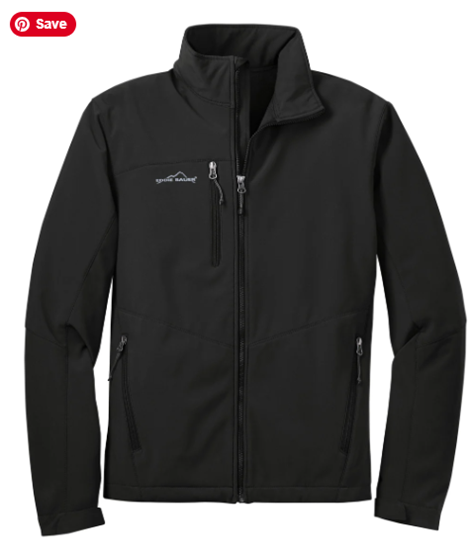
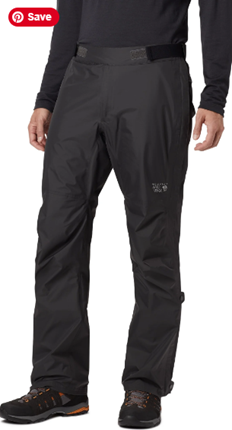
Accessories and Additional Clothing
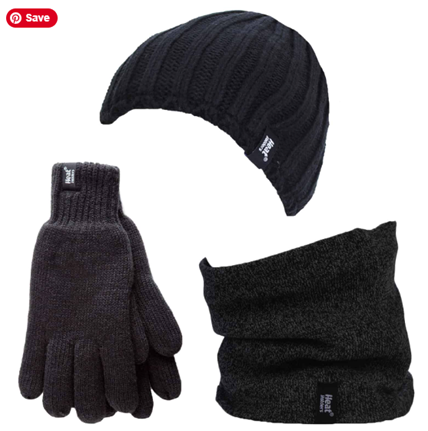
In addition to the core layering system, accessories such as hats, gloves, and gaiters play a vital role in providing sun
protection, warmth, and waterproofing as needed. Brimmed hats shield from harsh sunlight, while knit hats provide essential warmth in cold conditions. Neck gaiters offer versatile protection against sun, wind, and cold, while gloves provide dexterity and warmth for hands. Warm mittens are best for summit night. Gaiters help keep snow and debris out of boots, enhancing comfort and durability on the trail. Selecting the right accessories based on anticipated weather conditions and personal preferences enhances comfort and performance throughout the expedition.
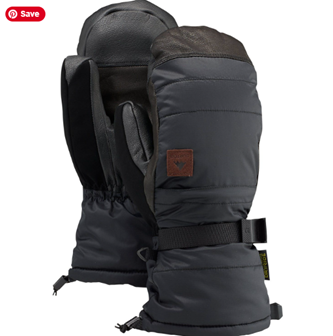
Dressing for Changing Conditions
Adaptability is key when dressing for the climb on Kilimanjaro, as weather conditions can change rapidly throughout the day. Climbers should be prepared to adjust clothing layers based on temperature fluctuations, activity levels, and environmental factors encountered on the mountain. Monitoring weather forecasts and observing signs of changing conditions allows for timely adjustments to clothing and gear, ensuring comfort and safety during the trek. Staying flexible and responsive to changing weather patterns is essential for a successful and enjoyable expedition.
Preparing for Summit Night
Summit night presents the most challenging weather conditions on Kilimanjaro, with extreme cold and high altitudes posing significant risks to climbers. Layering up with multiple garments on top and bottom is essential for retaining warmth and protecting against hypothermia. Climbers should be equipped with heavy-duty outer layers, insulated jackets, warm hats, and warm gloves or mittens to withstand the harsh conditions encountered during the summit push. A balaclava will keep your face warm and sunglasses with UV protection and polarized lenses will protect your eyes from the glare and sun’s rays. Proper preparation and adherence to layering principles are critical for staying safe and comfortable during this demanding phase of the expedition.
In short, here is a list of the items you will need to pack for your Kilimanjaro trek:
Clothing:
- Layering System: Kilimanjaro’s weather can vary drastically, from scorching sun to freezing temperatures. A layering system comprising moisture-wicking base layers (merino wool is optimal), insulating mid-layers, and waterproof outer layers is essential for adapting to changing conditions.
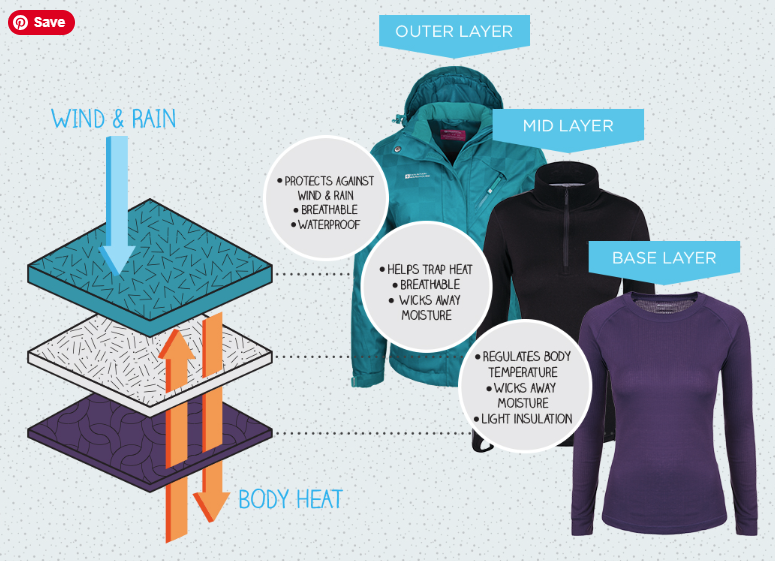
2. Insulated Jacket: A high-quality insulated jacket is indispensable for keeping warm during chilly nights and summit attempts. (Down is preferred)
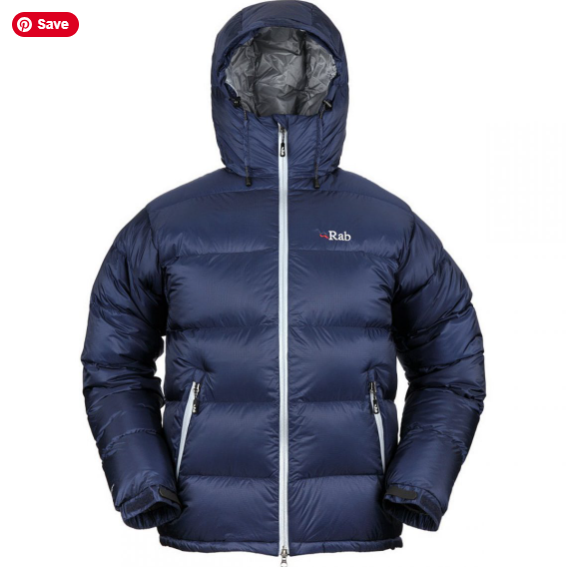
3. Soft shell or Fleece Jacket: Provide lightweight warmth and act as a mid-layer
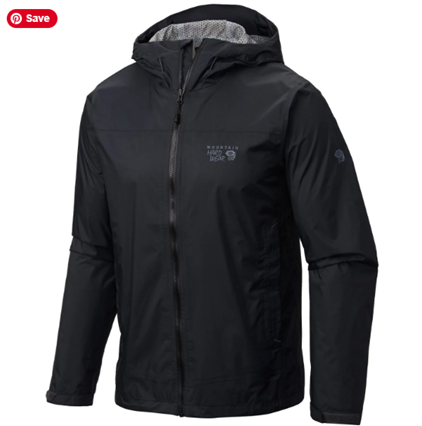
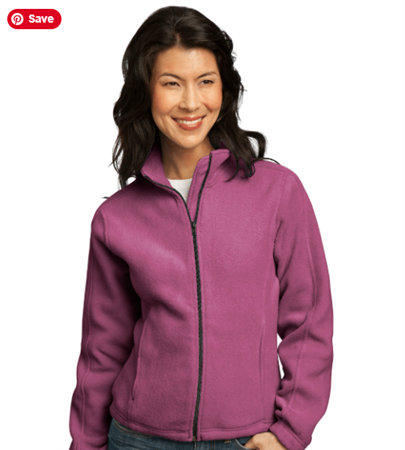
4. Waterproof Pants and Jacket: Protection against rain and snow is vital, especially during the rainy season. Make sure your rain jacket is big enough to fit several layers of clothing and jackets underneath.
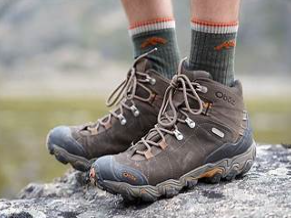 5. Hiking Boots: Sturdy, waterproof boots with ankle support are essential for navigating Kilimanjaro’s rugged terrain.
5. Hiking Boots: Sturdy, waterproof boots with ankle support are essential for navigating Kilimanjaro’s rugged terrain.
6. Gloves and Hats: Pack both lightweight gloves for mild weather and insulated, waterproof gloves for colder conditions. Additionally, bring a warm hat and a sun hat for sun protection.
7. Thermal Underwear: Lightweight and moisture-wicking thermals are crucial for retaining body heat at high altitudes (again, merino wool is the way to go).
8. Socks: Bring a combination of thick, moisture-wicking hiking socks and thinner liner socks to prevent blisters.
9. Neck Gaiter: necessary to retain warmth and keep out dirt and dust.
10. Boot Gaiters: will help keep your feet and lower legs dry and warm and prevent the dust and scree on the mountain from getting inside your boots.
Gear:
-
- Day Backpack: Opt for a comfortable, well-fitted backpack with sufficient capacity to carry your essentials (25L – 35L), including water, snacks, and extra layers.
- Duffel Bag: You will need a 90-100L duffel bag for your larger items and your clothing. Please keep in mind, though, that the weight limit the porters can carry is 33kg (approximately 15 lbs).
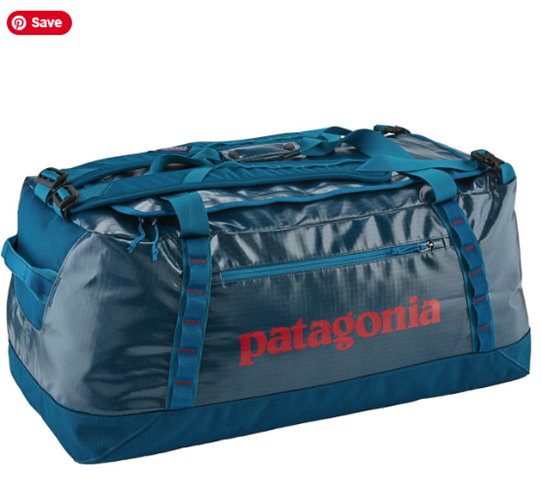
- Sleeping Bag: Choose a high-quality, 4-season cold-rated sleeping bag suitable for sub-zero temperatures. (Can be rented from us, payable in US dollars upon arrival)
- Trekking Poles: These provide stability and support, especially during steep ascents and descents.
- Headlamp or Flashlight: Essential for navigating campgrounds and early morning summit attempts.
- Reusable Water Bottle or Hydration System: Staying hydrated is crucial at high altitudes. Consider using a hydration bladder for easy access to water while trekking. Water hoses can freeze, so a 1L Nalgene bottle is also recommended. This can be kept from freezing by being stuffed in a heavy sock and carried inside your daypack.
- Sunscreen and Lip Balm: Protect your skin and lips from the sun’s intense rays and dry air.
- Sunglasses: Invest in polarized sunglasses with UV protection to shield your eyes from glare and the sun’s harmful rays, which are particularly strong at high elevations.
- First Aid Kit: Include basic supplies for treating minor injuries, altitude sickness medication, and any personal medications.
- Toiletries: Pack essentials such as biodegradable soap, wet wipes, hand sanitizer, and toilet paper in a waterproof bag.
- Small Towel: for drying off after washing your face, brushing your teeth, etc.
Miscellaneous:
-
-
- Cash and Documents: Carry sufficient cash in small denominations for tipping guides and porters, as well as important documents like passports and insurance.
- Snacks and Energy Bars: High-energy snacks like nuts, dried fruits, and energy bars provide quick fuel during the trek.
- Electrolytes – powder or tablets will help keep you hydrated throughout the trek.
- Camera or Smartphone: Capture unforgettable moments and stunning vistas along the journey. Don’t forget to bring a portable charger 😉
- Ziplock Bags: Tanzania has a ban on plastics but will allow Ziplock bags for tourists. Please be considerate and practice Leave No Trace principles by packing out all trash and waste.
- Optional Extras: Consider bringing items like an extra portable charger, camp shoes, pee bottle (so you don’t have to leave the tent at night), altitude sickness prevention supplements (Diamox), and a journal to document your experience.
-
Conclusion
Mastering Mount Kilimanjaro requires more than physical strength—it demands strategic planning and preparation, particularly in the realm of clothing and gear selection. By understanding the nuances of Kilimanjaro’s climate and adopting a layered approach to dressing, climbers can stay comfortable, safe, and successful throughout their expedition. From moisture-wicking base layers to waterproof outer shells, each piece of clothing plays a vital role in navigating the diverse weather conditions encountered on the mountain. With careful preparation and attention to detail, climbers can embark on their Kilimanjaro adventure with confidence, ready to conquer the summit and create lasting memories along the way. You can find all of these items at preferred retailers, like REI, Backcountry, Moosejaw, and Amazon.
Ready to plan your trip? Contact us today to get started.